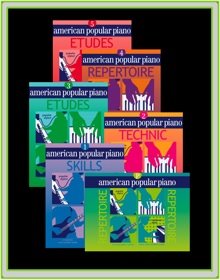At an altitude of 1500m above sea level, St. Veit is apparently Austria´s highest health resort!
It’s in a sunny hillside setting (in summer) and has fantastic views of the surrounding valley.
I flew to Vienna from London, then drove south for over 3 hours to get to St Veit, by which time it was dark, so the charm of the town centre was what I was aware of rather more than the actual setting of the town. Like this:

St Veit, Austria
I was met at the hotel by Cornelia Angelov from Schott Mainz and also by Heiko Kremers from Roland Germany. This was the first joint workshop sponsored by both Schott and Roland Germany and was held in a local church in St Veit. There was a delightful and friendly group of teachers from St Veit, some of whom had heard of Microjazz, some of whom were new to my work. Here are some of the teachers and you can see that they were happy to play as well as to listen:

Teachers playing and listening in St Veit
The first half of the presentation was introducing the teachers to the sounds of Microjazz, which has become a catch-all term for the Microjazz Collections, the Microstyles Collection, the Concert Collections and the Preludes Collections (and latterly MicroSwing, MicroLatin and MicroRock) The teachers seemed to really like the material and could see how it could be easily incorporated into their teaching programmes.
The second part of the presentation was concentrating more on the use of the HPi series of Roland digital pianos. 50 Microjazz pieces are “embedded” into these pianos and you can do all sorts of things with the data. For example:
- You can listen to a performance of any one of the 50 pieces, recorded (and approved!) by the composer
- You can record the left or right hand part of your chosen piece, using a built-in metronome (you set the speed) while the “other” hand is played back by the piano. The piano’s software can also rate your recorded performances!
- You can record one hand or both hands of the piece with a great backing track.
- You can make your own pieces up to the backing track and record them.
I’m still getting used to how to use the software seamlessly with a student but we had lots of fun playing around with the various combinations (as students will when they use the HPi piano at home)
It was clear that the combination of the Microjazz series, with its pieces that appeal to students and its strong pedagogical elements, and the interactive software built into the Roland HPi series pianos, has great potential. Students will be more inclined to practice, play and record things at home and of course they are building a knowledge base of contemporary popular styles quite effortlessly.
I hope to be doing more work in 2010 with Roland and Schott in the UK, Germany and Austria, using the Microjazz series alongside the HPi pianos. There is good potential for reaching new audiences through this exciting medium.
Thanks to Heiko from Roland Germany and Cornelia from Schott for organising this workshop and special thanks to the local St Veit Roland dealer, who was a great enthusiast for what we are doing (and a big fan of Country Preludes!)
Finally here’s a picture of me at one of the pianos, jamming along with a teacher who is playing the other piano, using the built-in software.














No comments:
Post a Comment